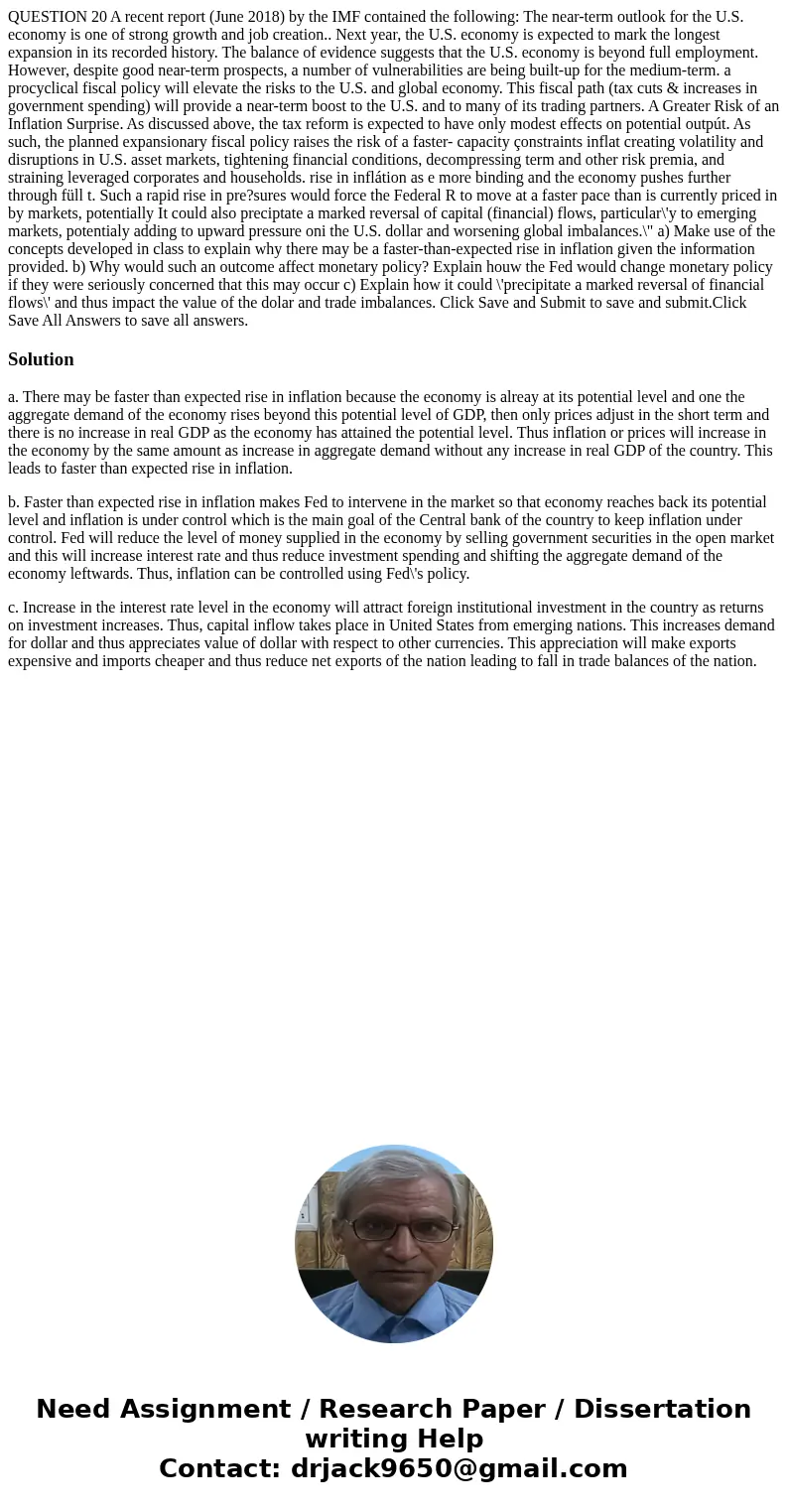QUESTION 20 A recent report (June 2018) by the IMF contained the following: The near-term outlook for the U.S. economy is one of strong growth and job creation.. Next year, the U.S. economy is expected to mark the longest expansion in its recorded history. The balance of evidence suggests that the U.S. economy is beyond full employment. However, despite good near-term prospects, a number of vulnerabilities are being built-up for the medium-term. a procyclical fiscal policy will elevate the risks to the U.S. and global economy. This fiscal path (tax cuts & increases in government spending) will provide a near-term boost to the U.S. and to many of its trading partners. A Greater Risk of an Inflation Surprise. As discussed above, the tax reform is expected to have only modest effects on potential outpút. As such, the planned expansionary fiscal policy raises the risk of a faster- capacity çonstraints inflat creating volatility and disruptions in U.S. asset markets, tightening financial conditions, decompressing term and other risk premia, and straining leveraged corporates and households. rise in inflátion as e more binding and the economy pushes further through füll t. Such a rapid rise in pre?sures would force the Federal R to move at a faster pace than is currently priced in by markets, potentially It could also preciptate a marked reversal of capital (financial) flows, particular\'y to emerging markets, potentialy adding to upward pressure oni the U.S. dollar and worsening global imbalances.\" a) Make use of the concepts developed in class to explain why there may be a faster-than-expected rise in inflation given the information provided. b) Why would such an outcome affect monetary policy? Explain houw the Fed would change monetary policy if they were seriously concerned that this may occur c) Explain how it could \'precipitate a marked reversal of financial flows\' and thus impact the value of the dolar and trade imbalances. Click Save and Submit to save and submit.Click Save All Answers to save all answers.
a. There may be faster than expected rise in inflation because the economy is alreay at its potential level and one the aggregate demand of the economy rises beyond this potential level of GDP, then only prices adjust in the short term and there is no increase in real GDP as the economy has attained the potential level. Thus inflation or prices will increase in the economy by the same amount as increase in aggregate demand without any increase in real GDP of the country. This leads to faster than expected rise in inflation.
b. Faster than expected rise in inflation makes Fed to intervene in the market so that economy reaches back its potential level and inflation is under control which is the main goal of the Central bank of the country to keep inflation under control. Fed will reduce the level of money supplied in the economy by selling government securities in the open market and this will increase interest rate and thus reduce investment spending and shifting the aggregate demand of the economy leftwards. Thus, inflation can be controlled using Fed\'s policy.
c. Increase in the interest rate level in the economy will attract foreign institutional investment in the country as returns on investment increases. Thus, capital inflow takes place in United States from emerging nations. This increases demand for dollar and thus appreciates value of dollar with respect to other currencies. This appreciation will make exports expensive and imports cheaper and thus reduce net exports of the nation leading to fall in trade balances of the nation.

 Homework Sourse
Homework Sourse